Category: Uncategorised
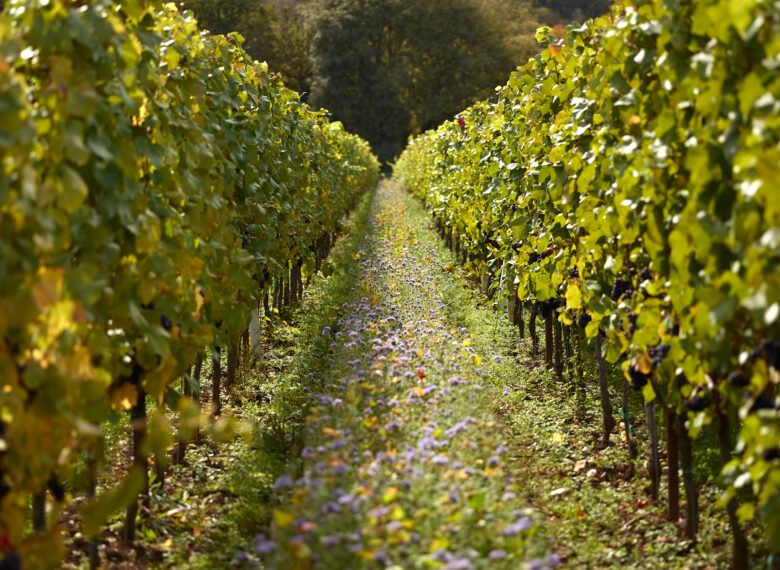
Back to their roots at Burges Field
Simon Mason, Head of Wine Sustainability at The Wine Society, wrote the following on regenerative viticulture at The Grange
Change can be slow in the world of wine, with tradition a major selling point for many. The annual cycle around the one precious crop of grapes understandably means a reluctance to throw caution to the wind with dramatic experiments.
For all that, new ideas do come around, and last year I wrote about the beginnings of a new movement focusing on regenerative viticulture – improving soil health and biodiversity to produce healthy, more disease-resistant grapes – and potentially, better wine.
Zam Baring, managing partner of The Grange and its vineyard Burges Field, and vineyard manager Samuel Philippot were at several of the same conferences I attended on this subject, and I was delighted to visit them to see their work for myself.

The Grange is situated on a chalky slope above the River Itchen in Hampshire, planted in 2011 to classic sparkling-wine grapes – chardonnay and pinots noir and meunier. The gravelly clay soil is incredibly shallow and the vine roots dig down deep into a thick layer of pure white chalk.
When I visited in April, on a cold, blustery day, it was hard to believe that Samuel was expecting budburst to begin the following week. That said, the bougies (candles) already laid out as a precaution against damaging frost were a reminder of the still marginal nature of winemaking in many areas of the UK.
Originating in Montpellier in the south of France and arriving at The Grange five years ago after managing a Bordeaux domaine, Samuel gamely says he greatly enjoys the English way of life. Starting in 2014, Zam and the rest of the small team trialled several different cover crops throughout the vineyard. A cornerstone of regenerative agriculture, cover crops can be used to improve soil texture and water retention through breaking up compaction, improving nitrogen content in the soil without adding fertilisers and potentially, by helping the soil store carbon.
A question of trial and error
As those in regenerative agriculture are at pains to point out, there is no recipe book for success in taking this approach – lots of trial and error will be necessary. Over the years, the team at The Grange have experimented with clover, various species of grass, phacelia, buckwheat and oxeye daisy – one of the ongoing issues being that as you mow so the wildflowers die down and the perennial grasses assert their dominance. As they themselves admit, there was a great deal of experimentation with this and, so far, they have yet to find the perfect mix.
Another principle of regenerative agriculture is to minimise the disturbance of the soil and thereby the communities of bugs, fungi and microbes that make it all work. The Grange’s next trial was to stop any cultivation underneath 20 rows of pinot noir down the centre of the vineyard. After four years the yields from the trial plot had dropped significantly with current vines only able to produce one cane from which new grapes can grow – as opposed to the two canes in the rest of the vineyard. While some drop in yield would have been acceptable to the team, in exchange for healthier vines and more consistent volumes, this was too much and so the trial plot has been reduced in size and the rest of the vines are being cultivated back to health.
Zam and Samuel believe the thin chalk soils are going to need a lot more activation before zero-disturbance will work here. That said, Zam was quite happy with some aspects of the trial plot. In the very difficult, wet 2021 vintage, the reduced vigour of the canopy leaves meant that there was more airflow through the vines and therefore no mildew, which was a big problem on the conventionally farmed plots. The quality of fruit was also excellent.
To build on the work so far, Zam and Samuel are putting together a more structured programme both in the trial plot and across the vineyard. From this year, a cover crop mix of vetches, oats, radish, buckwheat, clover, sunflower, linseed and native wild flowers will be applied. Intended to be self-seeding, this should only need resowing every three or four years, with the cover crop mown or crimped to help return the nutrients to the soil. With plants of differing heights growing at different rates, there is definitely a concern about airflow reduction.
Fauna and flora

Alongside cover crops, the team hopes to make more use of sheep in the vineyard. Winter grazing adds valuable nutrients back to the soil via manure and they can also help with ‘bud rubbing’ – the removal of unwanted buds on the lower parts of vines, sending all the energy into the shoots. This is already practised in other English vineyards, but the low height of The Grange’s vines means that the Ouessant sheep used elsewhere might do more harm than good. Samuel also plans to use fleeces on the ground to help with weed prevention.
Around the back of their brand-new winery, Samuel is developing another vital but less glamorous piece of the regenerative jigsaw – the compost heap. Horse manure and marc, the grape skins leftover after pressing, will be supplemented with mulched cuttings. The aim is to create a high-potency super compost that can be applied more thinly, resulting in fewer tractor passes through the vineyard and helping reduce both carbon emissions and soil compaction.
Does it work?
The team will be taking frequent soil measurements across 40 sample plots identified by GPS, testing things like earthworm count, rooting depth, presence of rhizosheaths and nodulation of legumes – all signs of healthy soil.
Speaking to Zam and Samuel, it is clear that they are committed to a regenerative approach and that it is likely to take many years to show progress. Given that five years is only five chances to see the results of change on the finished fruit and that every vintage brings many variables of its own, the challenges are obvious. “It’s very slow but it’s a direction of travel” says Zam, who plans to do the most he can without affecting the quality of his wines which is great news for our members. We look forward to updating on his progress.

The Wine Widow is away with the birds
We try to warn overnight guests about the crows but the invariable opener at breakfast is “Oh my god, the CROWS” as though the guests didn’t hear/believe us. They’ve been woken by a pair of birds who attack a particular set of windows, pecking at the glass with such ferocity it sounds exactly like someone knocking loudly at the door. It’s impossible to sleep through and usually begins around dawn.
Many studies have been made of corvids and their intelligence: In one, seven birds were captured and then released by researchers. The following year the same birds “scolded and harassed” the researchers – picking them out in a crowd. The study is in its 14th year and the birds still spot the original team, with 30 birds now joining in. Corvids, in other words, have long memories, hold a grudge and spread the word.
This, I think, affects my options.
It has been suggested that I stick a huge picture of an owl in the window to intimidate them so I am googling posters (most of which make owls look cuddly and wise and not at all intimidating) when I hear Zam swearing loudly. I tend to ignore this having learnt over the years that the violence of his expletive bears no correlation to the subject - could be imminent nuclear war or it could be we’re low on milk. Often it means he’s lost his phone. But I know that on this occasion he can’t have because I, very considerately, brought it in from the table near the Corvid window where he had obviously forgotten it.
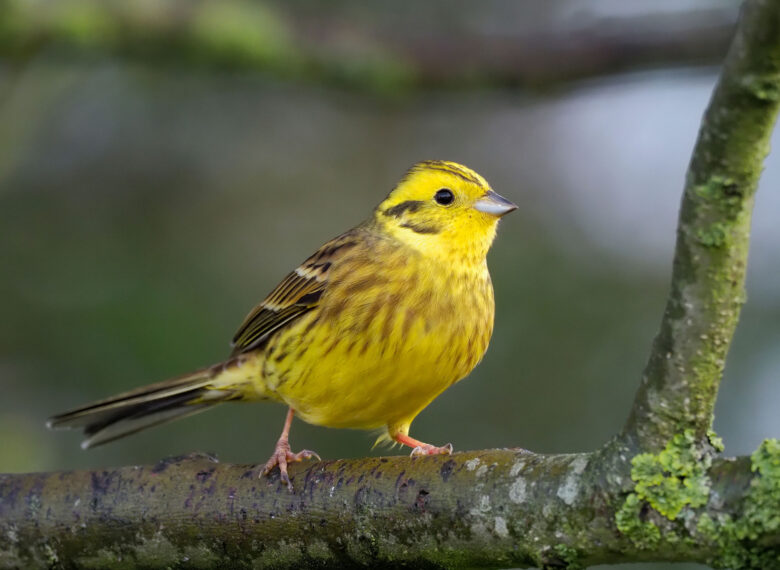
Turns out he was recording birdsong on his favourite app and I have disturbed it before it could add Eurasian Treecreeper (recorded later) to the impressively long list. A couple of days later I find myself home alone listening to birdsong and the next thing I know I’m downloading the same app and transfixed by the sounds around me.
We are woken by the crows again and I can’t help wondering if they’re all THAT intelligent given that they seem to be either attacking or trying to mate with their own reflections. But what do I know. I sit on a bench watching the app tell me what is singing around me. Minutes later I can’t tell a blackbird from a wren, having a much shorter memory than a Corvid.
Birds recorded at the winery on 13th June: Linnet, yellowhammer, goldfinch, swallow, blackcap, dunnock, great tit, robin, greenfinch, chaffinch, bullfinch, magpie, white throat, wren, blackbird, song thrush, collared dove, wood pigeon and garden warbler.

The Wine Widow on resilience
Paul Richardson’s book Hidden Valley is an account of his last decade spent cultivating a small plot in Spain, trying to be self-sufficient and working out what makes a life. He was given two rules by neighbours when he attempted to make wine: the stronger the better and always harvest in the third week in September. Oh for such certainties. Here, potential mildew has ousted potential late frosts into the top spot of vineyard worries. For now.
I stare out of the window where stair rods have snapped off the tulips and wonder if I’ll ever get the sweet peas planted. On the upside it’s been a magnificent year for dandelions and buttercups and our garden, plentiful in both amid the uncut grass is, I tell myself, highly fashionable.
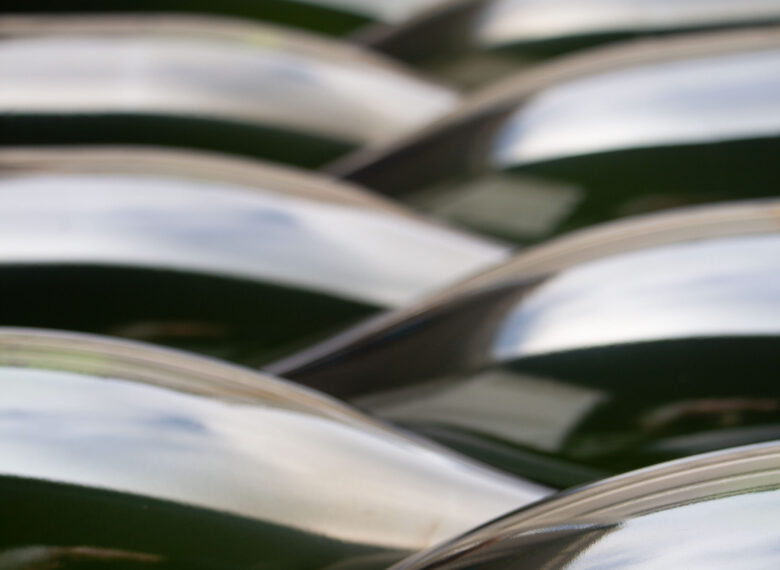
The winery team are busy bottling last year’s harvest - 16,000 bottles today despite a temporary breakdown of the machine. And 20,000 tomorrow.
I get home to an email from Paul in Spain. Not a drop of rain this year. He ends it with:
“nunca llueve a gusto de todos” (It never rains to everyone’s taste.)
Now that’s someone who’s learnt to roll with the punches.

The Wine Widow on tech
There is a pool of water in the footwell of the passenger seat and another in the footwell behind that. They have been there for so long that mould is growing up the back of the seat and when driving it, one has a sense an unhealthy level of spores invading the respiratory system. The garage diagnosed a leaking windscreen, which is in fact a newish windscreen. I have received this information and done precisely nothing with it although when the sun came out last week I opened the car doors in a vague attempt to dry it out. I am not, as is often pointed out, a practical person.
Nor do I have any understanding or interest in what might loosely be termed IT which includes switching t.v. channels. Zam on the other hand is both practical and rather proud of his technical skills and whilst I don’t mind the sighs as I pick up the wrong t.v. handset again it is not without a little bit of schadenfreude that I witnessed his part in an email debacle. I think it would be unwise to revisit this in detail, suffice to say that following his avowed understanding of MailChimp, a lot of people got a lot of emails and some people got none at all.

Who got what is still a mystery and the last time I said “But I still don’t understand why you sent….” He looked up and said “Please go away.” I think it’s to do with two-finger scrolling but then I’m not a practical person.
A few days later he gave a talk in our local pub. Historically, Zam loathes public speaking, partly because of anxiety and partly because he always cries. His anxiety stems from a traumatic schoolboy event when he had to recite a poem to his peers which he hadn’t learnt. On drying up somewhere in the second verse of The Wild Swans at Coole, he was hauled off stage and still shudders at the memory. The crying… well things just set him off. He can’t watch an ice skater performing a triple axel or The Repair Shop without tears rolling down his cheeks.
But he returned from the pub very buoyed up and jubilant. “It’s the oddest thing” he said, “but ever since I’ve been talking about the vineyard in public I find I can do it quite easily, without notes or fear… in fact I love it. I can do it for hours.”
And on this, I can truly say, we have no disagreement whatsoever.

The Wine Widow in Japan
A friend sends me a WhatsApp that says “Good Luck for tomorrow” which is when we leave for Japan to attend an international trade fair. The Widow has been promoted to Assistant for the next week. “It feels like the opposite of Christmas Eve” I message back.
That evening we go to the launch of The Silo Collective which is packed with friends, most of whom seem to know a lot more about Japan than I do and I find myself practicing bowing and receiving business cards with two hands but my attempts are met by a puzzled “No… not quite like that.” In the back of my mind I am definitely thinking “I may never see any of you again”.
This is because aeroplanes are not natural, a 14 hour flight is not natural and I will probably get a blood clot despite two pairs of very unnatural stockings in my bag. When I get there, I will loom over everyone on account of being over 6ft in the aforementioned stockings and be unable to communicate and therefore possibly starve.
Back home I find myself looking at the drooping basil plant by the kitchen sink and wondering “Oh, has a plant ever been quite so lovely?”. (I am listening to Mansfield Park and can’t stop thinking in Austen speak). I am, in other words, already homesick.
Zam is obsessed by jet lag and how to avoid it. He has downloaded an app that tells us to put on dark glasses and sit in dim light at 3pm, then get up at 5am in bright light. It tells us that we’ll be fine in three days time which seems to me exactly when one would be fine anyway. When we try to check in we are told “no reservation found” about which Zam is more relaxed than whether he should be doing this in the dark.

24 hours later - it must be more but what with time zones and lost days I can’t be specific.
- It is very sunny and pretty warm.
- Zam’s jetlag is worse than his Assistant’s.
- Only one person has commented on our height and he said it very politely.
- I have not yet bowed on account of still being very self conscious about this but it doesn’t seem to matter and I will attempt it tomorrow.
- Everybody wears a mask all the time. Which is not compulsory.
- There is a card on the table at breakfast with various instructions including “please enjoy your meal silently” which is a card I will be bringing home.
- And yes, the loos are clean with many symbols none of which illustrate Flush. It turns out be the button with 9 dots on it. I googled it. In desperation.
- I spend the day in the Great Britain section surrounded by UK cheese makers. Estonia is on my left, Italy on my right and Latvia just behind me.
- Team spirit amongst the British is high. Am very happy with the three stoppers Adrian lent me. He’s got one of our ice buckets.
- Skeins of cormorants fly over a lot.
- I have just been told that the Japanese do not on the whole go for sarcasm or irony. So I must stop saying it never rains in England.

The Wine Widow and the corking machine
Not being one of the world’s natural travellers, I am eyeing up the impending trip to Japan with a mixture of feelings. Zam is joining a number of English vineyards, invited by the Department for International Trade, to promote English sparking wine at a trade fair in Tokyo. He gets to take an assistant. I am nervous.
Being an assistant involves answering questions and for some reason, I panic when asked for the simplest information about the wine. How big is the vineyard? When was it planted? What year are we drinking? I should know. I do know. But whenever I’m asked anything I stare at my interlocutor and my mind goes blank. As for bottling dates, dosages and pruning techniques… I wonder if it’s because Zam has told me all of this so many times that it’s like being given directions to somewhere and you just switch off after the second directive to turn right.
I am attempting some revision when he appears in the kitchen, beaming. He rubs his hands together, and declares that this has been a really terrific day. The reason, it transpires, is down to the 1964 German corking machine that I had seen earlier in the week at the winery, bought from a closing down sale. It had just arrived and it had not been plugged in. In design, it reminds me of the 1960’s orange squeezer I recently bought online.
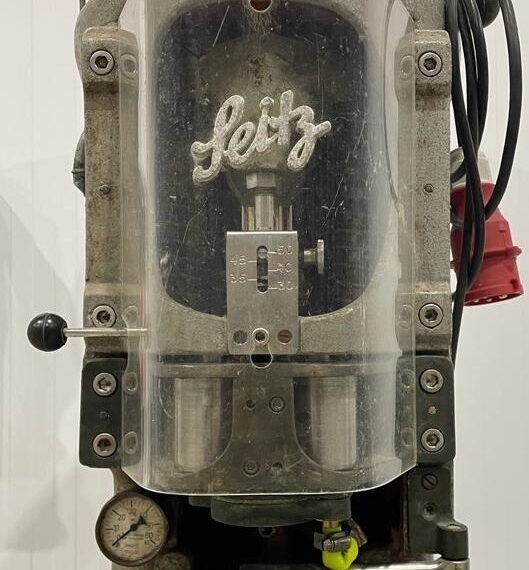
The beauty is in its simplicity, few parts to break. But when the Korma corker was turned on, nothing happened. Harry and Samuel took it apart and put it back together and… well the details being given to me by Zam are somehow akin to the second directive to turn right but I do remember jubilee clips and hydraulic tubing being mentioned. “And it makes the most beautiful noise,” he concluded.
Zam’s luxury on a desert island would be a box of broken things so I’m not remotely surprised that this episode has brought him joy. “But I’m not clear quite what you had to do with mending it?” I ask. That he was not part of the solution doesn’t dim his enjoyment one bit. That evening he spends hours with a pin trying to unclog the bialetti coffee pot that hasn’t worked for months and which has been gathering dust next to the broken toaster. Breakfast, I tell him, is becoming increasingly difficult. The pin yields no results and toast is now made on the hot plate. The aga toasting rack fell apart years ago. But the orange squeezer is, at the moment, operational.

The Wine Widow on photography
Gratifyingly, the panorama I have managed to film on my camera draws an awestruck reaction on the family whatsapp group. JEEEESUS being the general tone. I am quite proud of this little film, especially as I find the phone button counter-intuitive and tend to find I have filmed the ground. Actually the ground is, in this case, the point.
When we went to visit the Grand Canyon about thirty years ago Zam suggested we view it “from the other side.” We drove, for hours, we parked, we walked. And then we peered at a wide-ish ditch. “Are you sure?” I asked. “Yes” he didn’t sound it. “But in the films people fly airplanes through it and this….” I hesitated, thinking someone with a more athletic build could jump across it. We picnicked by the ditch but neither of us said it aloud until a long time later: we had actually failed to find something you can see from the moon.
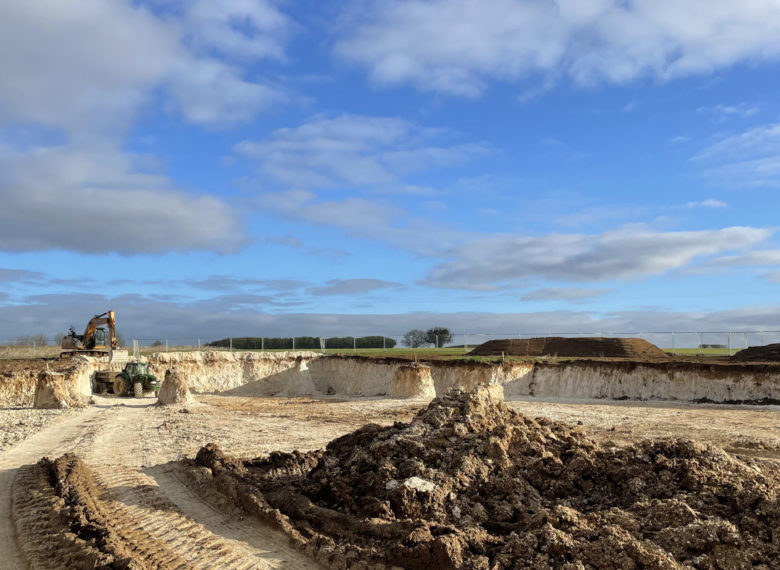
My panoramic film shows a hole in the ground that is over 100 metres long and about 30 metres wide. Zam makes sweeping movements with his arms to describe areas for fermenting, bottling, storing, labelling… we nod as he explains entrances and exits and that the winery, on its incredible chalk plateau, has to be finished before this year’s harvest. JEEESUS we think, all over again.
Amazingly you can hardly see it till you come across it. But it feels like you could see it from the moon.

The Wine Widow and the landrover

He booked himself and it into various Christmas fairs but got Covid and so asked genius winemaker Harry to take it to Wiltshire. The landrover averages about 35 mph. The tailback on the A303 became considerable. The wind and cold whistled round Harry’s head. The brakes were hair-raising. He didn’t want to drive it back again. When Zam recovered he went to collect it and arrived home pale and chastened. The “quirks” were, he now admitted, considerable. It went into the local garage for remedial attention and now it’s back. As a bar it’s rather wonderful. As transport… he’s on his own.
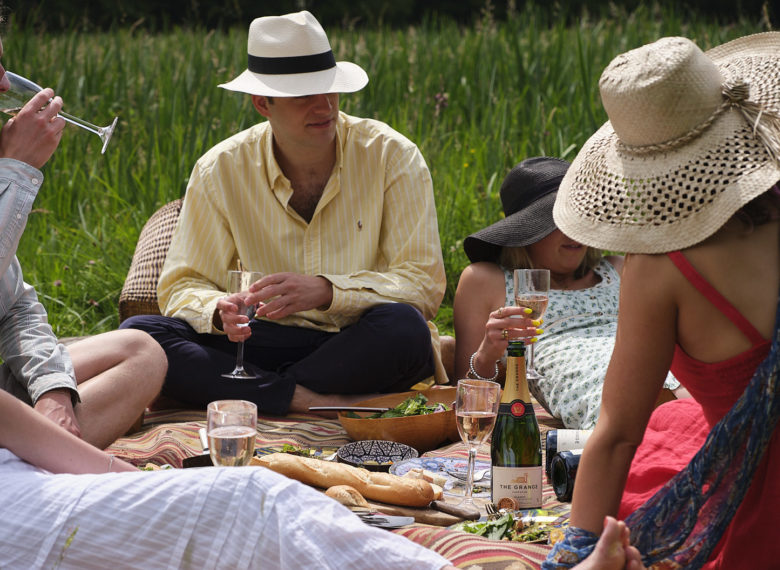
The Wine Widow does marketing
Zam tries to round up people to take part in two photo shoots… he wants young people but not too young and older people who are not too old. I am too old but he’s desperate. The photographer, Tom, has been photographing the vineyard since this adventure began ten years ago and is now so successful that he needs booking months in advance. Whatever the weather. The weather actually turns out to be the last nice day I can remember so the first shoot is an afternoon of picnics and swimming. The older group gather in a tent at the Grange Festival for supper, cooked by my sister: egg and prawn mousse, cold beef and salads, raspberries. “But don’t eat the mousse” she tells us, “It’s been sitting in the sun too long and will probably kill you.” We know that Zam will ignore this but Clare and I nod at each other. We’re not touching it. My only job, other than to turn up, is to bring cream.
I have it in my head that we are “borrowing” the supper tent from people now sitting in the first half of the opera and that we must disappear without trace before they emerge from the theatre. “What time does the interval start?” Nobody seems to know or care.

I’m so anxious I have second helpings of mousse. The other guests are so late they’ve tucked in before anyone has time to warn them. Then I realise I’ve forgotten the cream so we pour milk onto raspberries but it moves too quickly - as Tom explains while telling me to hold a glass by it’s stem. All I can see is the gardening dirt under my nails. Milk, dirt and poisonous prawns. I haven’t seen the photographs.








